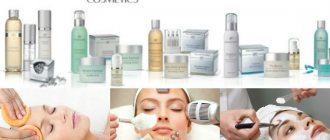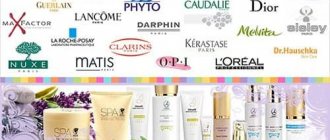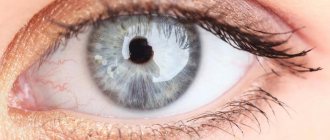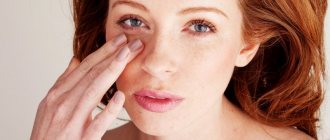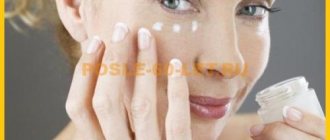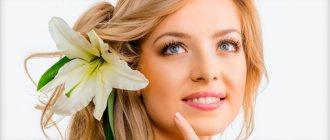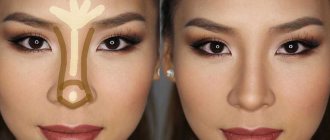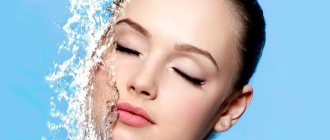What are parabens
The ancestor of all parabens is benzoic acid, which has been used for 400 years. In the 16th century, it was first isolated from benzoin gum and began to be used in the process of canning fruits. Thanks to a scientist from Germany, Justus von Liebig, the structure of benzoic acid was determined in 1832, and 43 years later Ernst Leopold Zalkowski, a German physiologist, in addition to the antimicrobial function, also discovered the antifungal one. By the way, acetylsalicylic acid, which is also aspirin, was invented on the basis of salicylic (hydroxybenzoic) acid. Since 1925, parabens have been involved in the process of food preservation; their effect is very high, compared to benzoic and salicylic acids, it’s all about high efficiency and low concentration of use.
Throughout the existence of parabens, there have been debates about their harm in cosmetics. Despite this, it is impossible to find a single law or regulation prohibiting their use. If large corporations are trying to find a solution by minimizing preservatives in their products, then representatives of small businesses are more likely to look for an alternative.
How can we, daily users, be afraid of parabens and make natural cosmetics at home? Or ignore scientific hypotheses and continue to use familiar means without fear?
Safety
Is there any harm from parabens added to cosmetics? Their safety has been proven in various studies in both animals and humans:
- study of acute and subacute toxicity;
- study of carcinogenic potential - the ability to cause cancer;
- analysis of the effect on pregnancy and the developing fetus;
- experiments on the processes of absorption, exchange and release of paraben breakdown products;
- tests of skin stimulation and photosensitivity (increased sensitivity to sunlight).
None of them have been scientifically proven to have any negative effects after use. In particular, the relationship between the use of deodorants with parabens and the incidence of breast cancer has been studied in detail. It has not been confirmed. Therefore, the Scientific Committee on Consumer Products of the European Commission (SCCP) concluded that, according to modern data, parabens can be used in cosmetic preparations without harm to health.
Along with this, there are research results showing the harm of these substances. For example, when parabens were injected under the skin of rats, changes occurred in the animals caused by hormonal imbalance. However, such data cannot be extended to humans and cosmetics for external use. The content of preservatives in cosmetic products and their hormonal activity are negligible and cannot have a noticeable effect on the gonads.
Today, scientists believe that the only real danger is the possibility of developing individual intolerance and contact dermatitis, although parabens are hypoallergenic components, since they are not proteins in their structure and are neutral in relation to the skin.
Types of parabens
Parabens are not an invention of scientists, but are natural substances that are found in a wide variety of plants.
Benzoic acid, for example, is abundant in cranberries and lingonberries, which is used in herbal medicine as antimicrobial agents and, in some situations, used by patients with kidney disease. To treat wounds and burns, willow bark, which contains hydroxybenzoic (salicylic) acid, is used. In blueberries you can easily find methylparaben, which plays the role of an antimicrobial agent. And this is not the entire list of natural parabens. Synthetic parabens are often included in products with a high water phase content. Thus, store-bought pastries and cakes, as well as bread and butter, contain methylparaben, ethylparaben, and propylparaben. E218, E214, E216 contain preservatives that extend the shelf life of products; thanks to this content, sauces, mayonnaise and ketchups can be stored in the refrigerator for much more than a few days.
Parabens are widely included in products by cosmetics companies. Shampoos, shower gels, shaving gels, conditioners, toothpastes, deodorants, masks, creams, decorative cosmetics, etc. — they all contain components that prevent delamination and unsuitability for use. A complete absence of preservatives in decorative and medicinal cosmetics is impossible.
The concentration of parabens may vary depending on the shelf life of the product and the form of release. For example, you can rarely find parabens in deodorants in aerosol containers, since the containers are hermetically sealed, which means they don’t particularly need preservatives, which cannot be said about dry deodorants, which contain the most parabens, because they come into contact with air. A similar situation is observed with deocrems squeezed out of a tube. Roll-on products for neutralizing the smell of sweat occupy an intermediate cell in terms of paraben content - between aerosol packages and dry sticks.
The primacy in the use of parabens is given to the pharmaceutical industry, which sells liquid dosage forms (drops, tinctures, syrups, etc.), soft dosage forms (ointments, gels, suppositories, etc.), gelatin capsules and even materials for dressings. Just remember the “talkies” that could be bought at the pharmacy only with a prescription and which had an expiration date of just a couple of days. With parabens, however, as with other preservatives, the products would not deteriorate so quickly.
Parabens are divided into the following types:
- Common
- methylparaben (E218), ethylparaben (E214), propylparaben (E216), butylparaben, benzylparaben. - Specific
- isobutylparaben, isopropylparaben, benzylparaben and their sodium salts.
In addition, preservatives also have names such as para-hydroxybenzoates, propagine, metagine, hydroxybenzoic acids, hydroxybenzoic acids, etc.
The dangers of parabens
Everything related to the composition of cosmetic products has always caused a storm of bewilderment, and parabens were no exception.
Even during their relatively short history in the field of cosmetology, which dates back only a couple of decades, their reputation has been repeatedly damaged. So in 2004, British scientists conducted a series of studies, the result of which was the conclusion that preservatives have the ability to accumulate in breast tissue. Parabens were found in 18 out of 20 samples of malignant breast tumors. The work of scientists did not prove that these substances stimulate the development of the disease, but still the result of the study itself was not so comforting, and persecution began against parabens. 6 years after the study, the Scientific Committee on Consumer Products of the European Union stated that there are no sufficient reasons to insist on the dangers of propyl and butyl porabene, but their amount in product formulations should definitely be reduced from 0.8 to 0.19%. In March 2011, Denmark became the first country to ban both of these parabens in products for children under 3 years of age. Moreover, many companies producing deodorants and antiperspirants have excluded these preservatives from their composition. Scientists warn that parabens are similar in effect to estrogens, which means those for whom estrogen is contraindicated (primarily pregnant women) should be careful when using a product with parabens in its composition. Butyl-, isobutyl-, propyl-, and methylparaben have a pronounced extragen-like effect. There is a fact that a preservative acts as an estrogen simulator only after it enters the body with food.
Women who care about the condition of their skin try not to sunbathe too much, because direct sunlight is the enemy of youthful skin. Studies have proven that methylparaben applied to the epidermis has a detrimental effect on the surface, enhancing the effect of ultraviolet radiation. Moreover, the preservative can not only accelerate the aging process of the skin, but also damage DNA, cause allergic reactions, irritation and inflammation. If the body contains a large amount of parabens, this can lead to hormonal imbalance, as well as an increased risk of cancer of the reproductive system. It is worth noting that all this information requires further confirmation or refutation from scientists. So far it has been officially announced that parabens are quickly absorbed, but also quickly eliminated from the body. If we are talking about cosmetics, then in the case of normal skin type, parabens are practically harmless.
What are the dangers of chemicals in cosmetics?
Parabens have been widely used in the cosmetics industry for over fifty years. But only in the early 2000s did the feasibility and safety of their use begin to be discussed among scientists and ordinary consumers. Large-scale research into the safety of these substances has begun. As a result, the public has gained access to facts that indicate the potential danger of parabens for the human body, no matter how they penetrate into it - through food or through the skin.
What is the danger of contact with parabens in cosmetics:
- These chemicals have estrogenic effects. That is, they contribute to increased production of female hormones of the estrogen group - estradiol, estriol and estrone. It turns out that using cosmetics that contain parabens is contraindicated for men. As well as some other categories of citizens. For example, people with hormonal imbalances, pregnant women. After all, excess estrogen in the body of the expectant mother can have a negative impact on the health of the fetus, as well as on the future reproductive ability of the woman.
- The accumulation of parabens (and, as a consequence, estrogen) in the body is an increased risk of developing cancer of the human reproductive system. Women are more likely to develop uterine or breast cancer, and men are more likely to develop testicular cancer.
- Parabens in cosmetics increase the negative effects of ultraviolet (sun) rays. For example, you apply moisturizer and sunscreen to your skin, or use a foundation with UV protection. But cosmetics contain parabens. As a result, you not only get the opposite result, but also expose your skin to increased risk. Skin photoaging processes occur faster than usual. In addition, there is a risk of DNA damage, which can result in various mutations in the offspring. To be fair, it should be noted that in order for violations to occur at the genetic level, you need to use cosmetics with parabens for decades and in large quantities.
- Parabens in cosmetics can cause areas of redness and irritation of the skin, especially in people with sensitive skin. In the most severe cases, a non-standard immune response of the body may occur - rashes appear on the surface of the epidermis, tissues swell, itch and itch.
- Parabens used in cosmetics somehow find their way into wastewater. These chemicals pollute the rivers where people get their drinking water. Next, soil contamination occurs, in particular agricultural lands. Due to the high concentration of chemicals in water and soil, they begin to pollute the air we breathe.
Considering the dangers of using parabens, why are these substances not yet banned for use in cosmetics? Firstly, because the dangerous properties of these chemicals have not yet been 100% proven and are not recognized at the official level. Secondly, because the use of parabens has some advantages for both manufacturers and consumers of cosmetics.
How can you replace parabens?
If you have a question about an alternative to parabens, know that you are not alone; specialists from major cosmetic corporations around the world are working on solving this problem.
True, they have not yet come up with a replacement for a preservative with properties similar to parabens, which miraculously prevent the growth of bacteria. If you use alcohol or essential oils as a preservative, another problem may arise - excessive dryness of the skin, the appearance of allergic reactions. In any case, the production of cosmetics is not carried out without the use of preservatives. If we are already talking about alternatives to the use of parabens, we should mention formaldehyde, one of the first preservatives used by representatives of the cosmetics business. Formalin is one of a number of cheap substances, has excellent antiseptic properties, and allows you to preserve not only the product itself, but also the gas phase underneath it, due to its volatility. All these advantages are offset by the toxicity of formaldehyde and how carcinogenic it is; this preservative is prohibited for use in many countries, even when it comes to the manufacture of wash-off cosmetics.
Sodium benzoate and potassium sorbate have long been used in household chemicals, as well as in cosmetics. Their advantage, first of all, lies in their price attractiveness. About preservatives - Biosil, Twister, they have not yet been studied in detail, which means it is too early to talk about any of their advantages or disadvantages.
You should be wary of chlormethylisothiazolinone and methylisothiazolinone, strong preservatives that are included in the product in very small dosages. Using products containing these substances may cause allergic reactions or dermatitis on the skin. True, during the study of preservatives, large concentrations of substances were taken, and not the dosage that is usually used for the manufacture of cosmetic products.
Recently, when choosing a cosmetic product, consumers are increasingly looking at the composition of the chosen product in order not to make a mistake with the purchase, which means that manufacturers should work hard to include safer substances in the formulation of products that extend the shelf life of emulsions.
If you don’t want to deal with parabens, use cosmetics with vitamins E and C, extracts and propolis, and use essential oils instead of a preservative. Just remember, such cosmetics have a short shelf life, no more than two to three weeks, and they can only be stored in a dark, cool place, ideally in the refrigerator. It is impossible to completely protect yourself from parabens, because these substances can be found in food, medicines, and toothpastes.
You can determine whether cosmetics contain parabens by their composition. Take a look at the list of ingredients used to prepare the selected product; this preservative has the characteristic ending “paraben” (butylparaben, propylparaben, etc.). Try to buy products with a short shelf life in a tube or in a package with a dispenser.
Very often, manufacturers produce creams in jars; the chosen type of container is a “gateway” for bacteria and microbes, which can lead to separation of the product’s consistency. That is why a large dose of preservatives is added to such creams. Despite the claims of experts that the difference in the dosage of preservatives in products presented in jars and tubes is minimal, it still doesn’t hurt to be on the safe side.
How to choose paraben-free cosmetics
There are several ways to avoid the effects of parabens on your skin:
- Buying products with o (“paraben free”). However, in fact, this does not mean that such cosmetics are truly free of preservatives. It is necessary to check its composition for the presence of not only parabens themselves, but also their analogues (benzoic acid esters, hydroxybenzoates and others listed above). Sometimes the manufacturer, in the hope of misleading the buyer, simply replaces the scary word in the composition with a more incomprehensible and neutral one.
- The use of cosmetics based on natural preservatives - ascorbic acid, eucalyptus oil, seaweed extracts and others. Natural cosmetics without parabens and other artificial preservatives are very expensive, and are stored for only 2-3 weeks in the refrigerator.
- Using homemade care products instead of store-bought tonics, lotions, creams, scrubs, and so on.
- Purchasing products with special labeling confirming the absence of preservatives: BIO, Cosmebio, Ecocert (for French products), BDIH (Germany), USDA Organic (USA).
- The use of products containing instead of parabens the modern preservative Biosol, specially developed by the pharmacological company Sandoz as an alternative to parabens. While maintaining excellent antimicrobial and antifungal activity, this component (Isopropyl methylphenol) does not have estrogen-like activity. Thus, it is used by well-known companies Uriage and ROCS, and it is also contained in many products of the Siberian Health brand.
List of paraben-free cosmetics brands
Florame
A French company producing natural essential oils and cosmetics based on them, as well as hygiene products and perfumes. A small production is located in Provence, batches of products are distributed to the company's boutiques.
Weleda
The Swiss brand actively sells natural cosmetics through a network of representatives, pharmacies, retail stores, as well as via the Internet, and provides several product lines intended for people of different ages.
Korres
Natural cosmetics made in Greece, which are sold all over the world. Products for makeup, body, face, hair care, sunscreen, perfume, and men's cosmetics are presented.
Caudalie
Production is located in France, the products are based on the beneficial properties of grapevines and berries.
Lavera and Dr. Hauschka
German brands without synthetic preservatives and fragrances, including numerous plant extracts.
REN
Products from the UK, where consumer safety is carefully monitored; it does not contain synthetic preservatives, dyes, perfumes and is approved in clinical trials.
Logona
Hypoallergenic German cosmetics containing a minimum of potentially dangerous substances that cause contact dermatitis.
Russian cosmetics without parabens are represented by products from Natura Siberica. It has the necessary certificates, including international ones (ICEA, ECOCERT, COSMOS STANDARD, BDIH), confirming the complete safety of all products produced. Raw materials for cosmetic products are obtained on specially created farms, as well as in the wild nature of Siberia. The products are distributed through a network of company stores and can also be purchased via the Internet.
Eco-cosmetics are quite expensive. Therefore, you can pay attention to some mass products that also contain a minimum of parabens. These brands are Green Mama, Syoss, Maybelline, Revlon, CoverGirl, L'Oréal.
You should not think that these products contain absolutely no preservatives. Otherwise, they could only be stored in vacuum packaging and, after opening, only briefly in the refrigerator. Typically, manufacturers replace parabens with other preservatives - salicylic acid, benzyl alcohol, sorbic, benzoic acid, ethanol, essential oils.
Products for children
In conditions of significant environmental stress on the body of a small child, every mother would like to use natural care products. Of course, you can use ordinary herbal infusions that are available to everyone. However, there are also special eco-friendly products for children. Children's cosmetics that do not contain parabens are produced by the following companies:
- Weleda;
- Mustela;
- Mulsan Cosmetic.
Popular purchased products without parabens
There are many paraben-free products on sale, including:
- Universal day face cream “AUR PLUS 5 in 1”, Maurya
- a product from an Indian manufacturer contains components that moisturize, slow down the aging process of the skin, and also remove harmful substances. The composition is rich in almond oil, wheat germ oil, shea butter, vitamin E, Tulsi extract, etc. Volume - 50 ml, price - 410 rubles. - Cleansing foaming gel for oily problem skin “EFFACLAR”, La Roche-Posay
- has a physiological pH of 5.5, does not contain parabens, alcohol, dyes, soap, developed on the basis of thermal water. The product cleanses the skin of excess sebum, impurities and makeup residues, leaving it fresh and clean. To use, lather the product in your palms with a small amount of water and apply to the skin with gentle movements. Volume - 200 ml, cost - 859 rubles. - Intensive moisturizing cream "Arctic Aqua", Lumene
- a product with a delicate texture allows you to balance the optimal level of moisture in the skin and provides deep hydration for a long time. The cream from a Finnish manufacturer contains the purest Arctic spring water, which is enriched with minerals beneficial to the skin, and is used for normal and dry skin. Volume - 50 ml, price - 402 rubles.
Video review about parabens:
